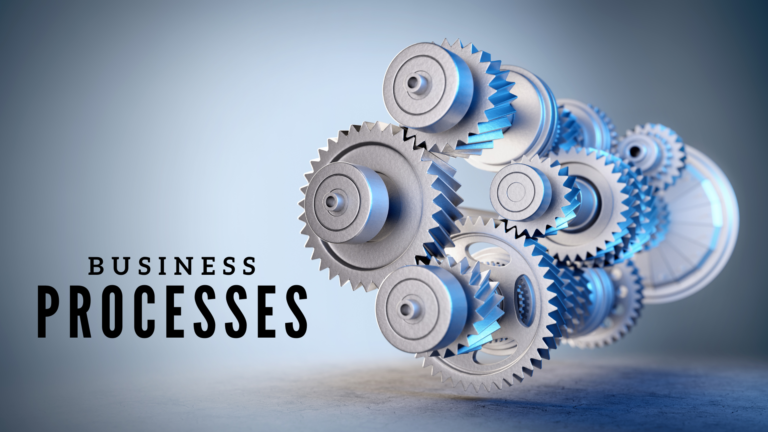“Our inventory is time – and it hasn’t changed. We need to sell every minute of every hour of every day for us to be successful.”
In 2008 and 2009 there was a change in Service scheduling. Because of the economy, people simply weren’t coming into Service Departments like before. In trying to fill bays and sell time, Advisors began telling guests to, “just bring the vehicle on down.” That method was probably the best method to drive traffic into your Service Department. So, we continued doing it.
And, during that time, many of the manufacturers rolled out their quick oil change programs that encouraged customers to drive in without an appointment. Many of the advertisements were geared for “No Appointment Necessary.” And, even to this day, we see issues that this has created in the quick oil change lanes. More times than not, our Technicians in these lanes are paid hourly. And it’s normal to see really flat down-times and really crushing busy times. One hour you may feel that you should hire 6 more oil changers. Then the next hour, after you rush through your guests, you may have your staff sitting on buckets reminiscing about the last hour. “Wow, was that bad…”
Walking the Tightrope
Our inventory is time – and it hasn’t changed. We need to sell every minute of every hour of every day for us to be successful. And, we all get that when a Technician is sitting, we’re not selling that time. So, is there a more productive way to do business? And, are we missing business because we have adopted these techniques?
Appointments in “Quickie Oil Change?”
As I travel across the country and explore this concept with dealerships, many of them are latching onto the programming that they’ve received: “It has to be NO APPOINTMENT NECESSARY.”
My point is this. I travel almost every week to a dealership. MY most precious asset is time. My life revolves around finding services that address this need. For example, I would never go to a “NO APPOINTMENT NECESSARY” place to get my haircut. I’m not willing to sit on a bench for an undetermined period of time until they can get to me. My time is too precious. So, I get my haircut where I can get an appointment — and where they are very respectful of those appointment times.
To another point: there are thousands of airline flights everyday, filled with people just like myself, and I’m guessing that you don’t have to fly to have time management issues. If we don’t take appointments for these services, are we pushing away customers that would love to do business with us, but simply can’t be a part of our “first come, first served” business process? I think that we need to adapt to both philosophies. Some people don’t want to make an appointment.
They may never know when they are going to have time available. I believe that we have to configure our Departments for both kinds of customers. After all, we want to increase repair order count and customer loyalty.
The Fix
A great way to fix this is to employ both concepts, which may mean having appointments in the non-peak times. This means that we can capture new customers and sell off our non-sold hours. We can also convert walk-ins to appointments by offering to make them “the next appointment.” Let’s have a followup system to call them a few days ahead of time. My dentist does it well. My optometrist does it well. My barber does it well. And what are they selling? Oh yeah…time. p. 81 Repair Shop
Let’s talk about your Service Department. In a lot of the stores that I visit, we count cars. We back into the figure that we need. “I need $200,000 in labor sales. My effective rate is $100 per hour. I have 24 working days in the month. That’s $8,333.00 per day or 83.3 hours per day. We write 1.8 hours per repair order. I need 46 repair orders per day. And if I want to book 80% of my work to allow for emergencies, walk-ins, internals, etc., then I need to book 37 appointments per day.” I get it. I also get that there are no guarantees in a scheduling process. People show up. People don’t show up. People show up early. People show up late. People who weren’t going to wait, suddenly are. It’s the same everywhere I go. We’ll come back to these thoughts. Let me move on. The first real issue to fix in the Service Department is this 2008-2009 mentality. It’s not a good situation for everyone to come down first thing in the morning. Count your Advisors.
Isn’t that number the maximum number of appointments we can have at a given time. How can you have three appointments and two Advisors? Someone is going to be inconvenienced. “If I have an 8 o’clock appointment, I am expecting to come into your Department and be acknowledged and waited on at 8:00AM. I didn’t sign up to get up early so that I can watch you fumble quickly through all the customers to get to me. I signed up to be waited on at that time.”
Reality
I see dealerships that will schedule customers correctly, but still have the barrage of retired people trying to get donuts and coffee. So, they come in at the same time your business crowd comes in. Your business crowd has a faster pace. They need to come in, communicate and get to work. Your retired customers don’t have that same agenda. Many times they’ll want to show you pictures of the grandkids and talk about that trip they’re getting ready to take. They may not have an appointment, but our business person behind them does. So we were late in getting to our business appointment because we took this walk in. We rush through the pictures of the grandkids and rush through the experience with the businessperson. We lose either way.
Retraining Your Guests
“Wow, you really want me to train my guests?” Yes, I do. We trained them back in 2008 that you don’t need an appointment. Just come on down! Now we need to train them again. Create word tracks for your staff, so that the outcome is what you want. You want a warm approach that shows the benefits of having an appointment. It’s really that simple. Example: “Mr. Smith, we’re starting to get very busy again. In the future, I recommend that you please call our appointment center prior to coming over. I would never want to turn you away or see you wait a long time.”
The Results When we don’t control arrival times, Advisors try to handle the customers the best they can and as expediently as they can. But, in most cases, the customer leaves feeling they were “rushed” through the experience.
Remember, our goal is to create great relationships in the service lane and how can we do that when we have our customers lined up and impatient?
Suggestions
- If you have 7 Advisors, let’s leave one of them open during each appointment time slot to handle any walk-ins or emergencies.
- Train your Sales staff to wait until after peak times to see an Advisor for service. Too many times, in that line of waits, I will see dealership Salespeople. Your dealership’s own Salespeople should be treated as walk-ins. And, we should have an Advisor ready to handle their needs. The Salespeople should not all line up after the sales meeting. This creates issues with customers who have called in for appointments.
- Schedule your appointments throughout the day. This will be easier for everyone. And the belief that you can’t fill the 11:00AM spots and the 2:30PM spots because no one wants to come in at those times is bunk.
- Offer two times and two days. Don’t ask the customer when they want to come in. When you do that, you either have to be prepared to put them in where you don’t have enough time, or to tell the customer “no” if they choose an unavailable time.
- Predetermine “wait” appointment times. “Waiters” don’t all have to compete for the television remote. Spread them out during the day to minimize the number of appointments in your waiting room. This will accommodate their personal space and make them feel comfortable. And managing multiple waits creates an environment that makes it hard to up-sell additional work. In Japanese, Kaizen is engineering a process that begins at the needs and desires of the customer. Let’s approach our appointment system that way to better accommodate the needs of our customers. By doing so, you will create more demand which will, in turn, create a need for solid and improved processes at your dealership.
By Greg Criss reprinted from Fixed Operations Magazine




